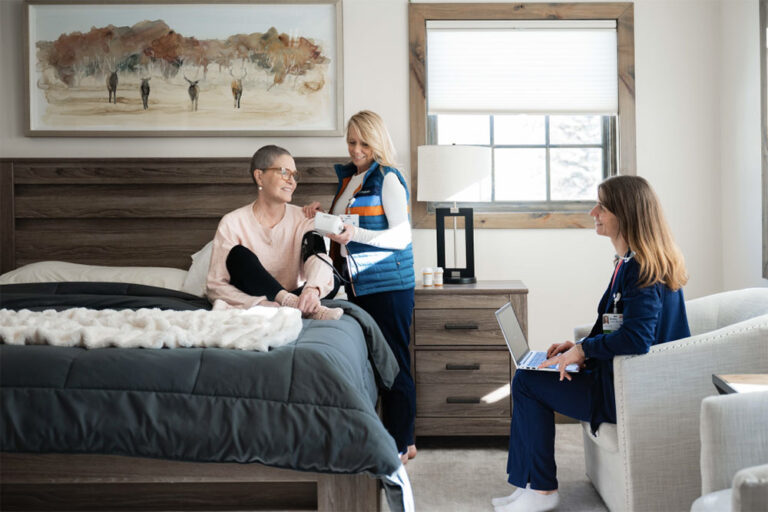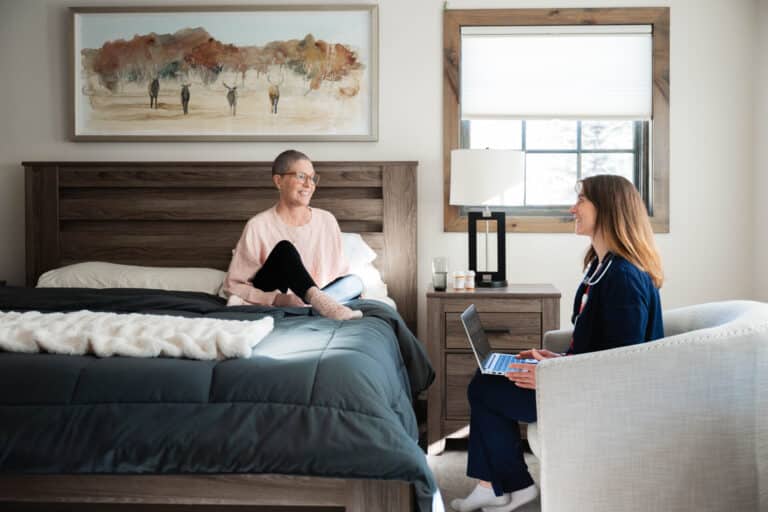Skin Cancer Prevention Starts With UV Ray Awareness

July is UV Safety Awareness Month. With summer comes hours and hours of outdoor activity in the sunshine. Many people don’t think twice about the invisible and harmful UV rays that are shining down on them. However, long-term exposure to UV rays can cause skin cancer and should be taken seriously.
A large portion of the population is regularly exposing themselves without protection to UV rays and increasing their chances of developing skin cancer. Only 12.8 percent of adults reported wearing protective clothing, and 14.7 percent reported wearing a wide-brimmed hat while in the sun.
It is important to make yourself aware of what UV rays are and how to protect yourself accordingly for a long and happy life. You can still have fun in the sun and reduce your exposure to UV rays and, in turn, reduce your risk for skin cancer with a few preventative steps!
What Are UV Rays?
You may have heard of UV rays before in conjunction with artificial tanning and tanning beds. UV rays or Ultraviolet Radiation is emitted from the sun. It provides benefits like Vitamin D but can also cause a whole host of health risks.
There are three main types of UV-rays:
- UVA
- UVB
- UVC
UVA rays are the lowest level of UV rays. UVA rays are responsible for indirect skin cell DNA damage and are linked to skin aging like wrinkles. UVA rays penetrate the deepest into the skin and occur throughout the year. UVA rays are also responsible for some skin cancers.
UVB rays are the second tier of UV rays. They are more powerful than UVA rays and can cause direct damage to skin cell DNA. If you have had a sunburn, then you have had direct contact with UVB rays. Most skin cancers result from exposure to UVB rays.
UVC rays are very powerful, but they never reach the ground. They react with the ozone high in the atmosphere.
UV rays are strongest between 10 a.m. and 4 p.m. They are also stronger during the spring and summer months.
Are There Safe UV Levels?
UVA and UVB rays are safe in moderation and with correct protective coverings. The World Health Organization and CDC recommend 5 to 15 minutes of sun exposure up to 2 to 3 times per week. After all, UV rays give us vitamin D, which is essential for our health!
You can also check the UV index to see how strong the UV rays are before you head outside. UV rays are measured on a scale of 1 to 11+.
The higher the number, the stronger the UV rays and the greater chance of a sunburn or skin damage that could lead to skin cancer. Limiting your sun exposure to the times the UV rays are the lowest is the best for your health.
What Are the Risks of UV Rays?
The common sign that you’ve been affected by UV rays is sunburn. Over time and with repeated sunburns, you could develop more serious conditions such as:
- Potentially blinding eye disease
- Premature aging of the skin
- Suppression of the immune system
- Skin cancer
- Basal cell cancer
- Melanoma
The most dangerous conditions that can develop due to unprotected exposure to UV rays are the various forms of skin cancer mentioned above. Some people are more prone to developing these serious conditions than others. If you align with any of the following categories, you should take extra preventative steps when out in the sun:
- Your family has a history of skin cancer
- Are over the age of 50
- Have a lighter complexion, including lighter skin, hair, and eyes
- Have had sunburns in the past
What Happens to UV Rays at Higher Evaluation?
UV rays are much stronger at higher elevations. If you find yourself in the mountains, it is extremely important that you take steps to protect yourself from more intense UV rays.
How Can I Protect Myself From Harmful UV Rays?
Even if you don’t fall into the high-risk categories, it is still important to develop habits to reduce your risk of cancer due to UV ray exposure.
- Wear full-coverage clothes like long sleeves and pants
- Wear a hat that covers your face, head, ears, and neck
- Use sunscreen with an SPF higher than 15 and protects against UV-A and UV-B rays
- Avoid tanning beds
- Wear sunglasses that protect against UV rays
- Stay in the shade as often as possible
It might not be possible to stay in the shade or keep completely covered at all times. If that is not possible, make sure you are wearing a wide-brimmed hat and applying and reapplying SPF sunscreen at regular intervals.
Are Seniors More at Risk?
Absolutely. Did you know that less than half of older adults protect their skin from harmful UV rays? In fact, those over the age of 65 are diagnosed with Melanoma more than any other age group. There are a few reasons that seniors are getting diagnosed with skin cancer more than any other group:
- Seniors have spent decades in the sun
- Skin cancer increases with age due to a decrease in autoimmune function
- Preventative checks and self-exams are falling by the wayside
In order to live a long, happy, and healthy life, seniors should take preventative measures when spending long hours in the sun, including regular self-exams and skin cancer screenings.
How Do I Do a Self-Exam on My Skin?
A self-exam is simple and a great step to incorporate into your prevention program. You should look for:
- A mole, spot, or bump that is changing in size, color, or shape
- A continually bleeding sore
- Rough or scaly red patches
- Wart-like growth
- A new mole
- A mole with irregular borders or an odd shape
In addition to self-exams, you should get regular checkups and skin cancer screenings. Anyone over the age of 25+ should have a skin screening once a year. Skin screenings save lives. Treatment works when skin cancer is identified and found early. If you notice any suspicious markings, new moles, or changes to your skin, call the Vail Health Shaw Cancer Center to set up an appointment with a skin cancer specialist.


